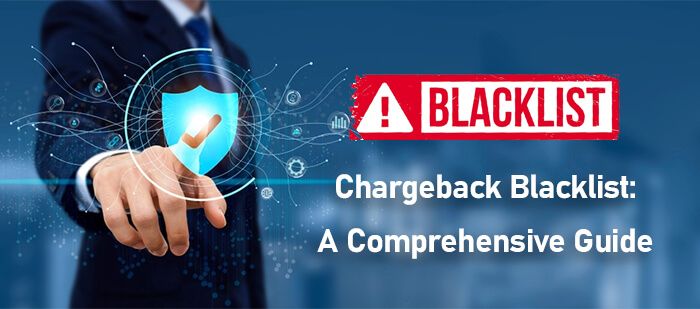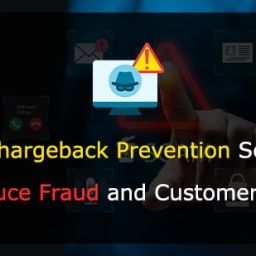
Chargeback Blacklist is a term used in the world of e-commerce and online payments to refer to a list of customers who have a history of filing chargebacks. Chargebacks can be costly for merchants, leading to lost revenue, fees, and potential damage to their reputation. In this comprehensive guide. We will explore what Chargeback Blacklists are. How customers are added to them, legal and ethical considerations, alternatives to using them, and best practices for managing a Chargeback Blacklist.
Understanding Chargeback Blacklists
A Chargeback Blacklist functions as a critical safeguard for merchants in the digital marketplace, designed to flag individuals who have frequently contested transactions through chargebacks.
This preventative measure is not taken lightly; it comes into play when a pattern of disputing charges emerges, signaling to businesses that a particular customer poses a financial risk. The mechanism behind this is straightforward yet essential for maintaining transactional integrity.
When a chargeback claim is initiated by a consumer. It triggers a review process by the merchant. This review assesses the legitimacy and frequency of such claims by the customer. If deemed excessive or fraudulent. The merchant may then decide to place the individual on the blacklist.
This action serves not only as a protective step for the business but also as a deterrent against misuse of the chargeback process by customers. It’s a strategic approach to safeguard business interests while also striving to uphold fair and honest transactional practices. Merchants utilize this tool with the aim of minimizing unwarranted financial losses and ensuring a trustworthy consumer base.
Some Related Blogs
- Single Chargeback Cost: A Comprehensive Guide
- Understanding Hotel Chargebacks: An Essential Guide
- How to Successfully Navigate a Debit Card Chargeback
- The Chargeback Process: A Necessary Evil in Retail?
The Process of Adding Customers to a Blacklist
Instituting a Chargeback Blacklist involves a nuanced process that merchants tailor to their unique circumstances, reflecting their tolerance for risk and past experiences with chargebacks.
Typically, this process hinges on a carefully defined threshold. Which may include a specific number of chargebacks occurring within a predetermined period. This threshold acts as a trigger, signaling when it might be appropriate to consider blacklisting a customer.
To ensure fairness and accuracy. The evaluation of a customer’s actions leading to potential blacklisting often involves a detailed review of each chargeback incident. This review helps to distinguish between genuine disputes and patterns of abuse. Upon reaching or surpassing the defined threshold. The merchant then moves forward with adding the customer to the blacklist.
This step is not taken hastily; it reflects a response to repeated behaviors that suggest a high risk of future financial losses through disputed transactions. Implementing this process requires a delicate balance between protecting the merchant’s interests and maintaining a positive customer relationship framework.
Merchants might also set in place a protocol for notifying customers of their status, explaining the reasons behind their addition to the blacklist, and outlining any possible steps for removal from it. Thus ensuring transparency and fairness in the blacklisting process.
Legal and Ethical Considerations
Navigating the intricacies of legal and ethical frameworks is paramount when implementing a Chargeback Blacklist. Merchants must tread carefully to ensure their practices align with consumer protection laws and principles of fair treatment. This involves a meticulous approach to not only how customers are added to the blacklist but also how this information is utilized and stored.
Privacy regulations, such as the General Data Protection Regulation (GDPR) in Europe and similar laws in other jurisdictions, dictate strict guidelines on the handling of personal data, including any records that contribute to a Chargeback Blacklist. Additionally, the potential for inadvertently discriminating against certain groups of customers poses a significant ethical concern.
![]()
Email us anytime!
Email customer service 24/7
![]()
Call us anytime!
Reach customer care 24/7 at +1 (888) 901-8653
To mitigate these risks, it is advisable for merchants to engage in transparent communication with customers about the reasons for their inclusion on the blacklist and the criteria used. This transparency not only helps in maintaining a trust-based relationship with customers but also serves as a safeguard against possible legal challenges.
Ensuring that the practice of blacklisting is applied uniformly and justly across all customers, without bias, is essential in upholding both the legal and ethical standards expected by consumers and regulatory bodies alike.
Alternatives to Chargeback Blacklists
Exploring options beyond Chargeback Blacklists allows merchants to proactively address and prevent chargebacks from occurring. Focusing on enhancing the overall customer experience is a viable strategy. This can include refining the accuracy and clarity of product or service descriptions on websites and marketing materials.
Thereby setting realistic expectations for the customer. Implementing comprehensive customer service initiatives that prioritize prompt and effective responses to inquiries and concerns can also play a significant role in reducing dissatisfaction that may lead to chargebacks.
Simplifying the process for returns and refunds is another approach that can discourage customers from resorting to chargebacks as a means to resolve disputes. Furthermore, integrating advanced fraud detection and prevention tools into payment processing systems offers a technical solution to identify potentially fraudulent transactions before they are completed,
Thereby reducing the likelihood of chargebacks. By adopting these alternative strategies, merchants can mitigate the impact of chargebacks on their operations without solely relying on blacklisting customers, fostering a more positive and trust-based relationship with their consumer base.
Best Practices for Managing a Chargeback Blacklist
Efficiently managing a Chargeback Blacklist necessitates the establishment of transparent and consistent policies. These policies should outline the specific criteria for adding individuals to the blacklist, along with a formal review process to ensure accuracy and fairness.
It’s vital for merchants to periodically assess the list. Removing those whose purchasing behavior no longer poses a risk, and updating entries based on recent activities. Open lines of communication with blacklisted customers are crucial; informing them about their status. The reasons behind their blacklisting, and the actions required for removal promotes understanding and possible resolution of the underlying issues.
Additionally, implementing a structured appeal process empowers customers to present their case, potentially leading to their removal from the blacklist if misunderstandings are clarified or behaviors change. Adhering to these best practices helps maintain a balance between safeguarding business interests and fostering positive, transparent customer relations. Ultimately contributing to a reduction in chargebacks and enhancing the overall integrity of online transactions.





